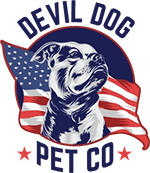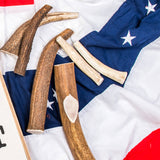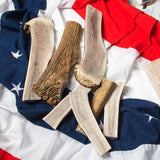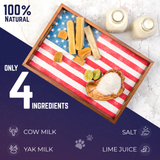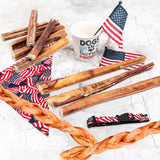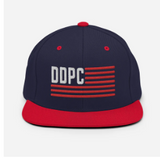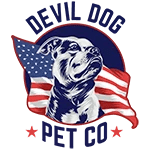If you're watching your new puppy turn your favorite shoes into chew toys, you're not alone. Chewing is completely normal puppy behavior—it's how they explore the world, relieve teething pain, and develop strong jaws. The challenge isn't stopping them from chewing; it's teaching them what's safe to gnaw on.
Key Takeaways
- Chewing is a natural behavior for puppies that helps them explore and relieve teething pain.
- Puppies chew to develop strong jaws as part of their growth process.
- The goal is not to stop puppies from chewing but to guide them toward safe chew items.
- Understanding why puppies chew can help owners provide appropriate chew toys.
Table of Contents
Quick Answer: Best Starter Chews for Puppies
Puppies should start with oversized split antlers, Standard bully sticks, or appropriately sized yak chews once their adult teeth begin emerging (around 4-5 months). Before that milestone, stick to puppy-specific teething toys. Always supervise chewing sessions and choose chews longer than your pup's muzzle to prevent choking.
Here's the truth: every destroyed slipper, chewed table leg, or shredded couch cushion traces back to one thing—your leadership. That's not blame; that's opportunity. When you understand why puppies chew and channel that energy toward safe, appropriate outlets, you transform a frustrating behavior into a tool for building a well-adjusted dog.
This guide will walk you through the science behind puppy chewing, help you identify the safest starter chews, and give you a battle-tested roadmap for protecting both your belongings and your pup's developing teeth. We'll cover everything from teething timelines to emergency protocols, because extreme dog leadership means being prepared for every scenario.
Understanding Puppy Chewing Behavior
Before you can solve the chewing challenge, you need to understand what's driving it. Puppies don't chew your stuff to spite you—they're responding to biological and psychological needs that, when properly channeled, actually strengthen your bond.
Why Do Puppies Chew?
Teething relief tops the list. Between 3-7 months, puppies lose 28 baby teeth and grow 42 adult teeth. That's a lot of gum pain and pressure. Chewing provides natural pain relief and helps loosen stubborn baby teeth that need to fall out.
Exploration and learning drive constant mouthing. Puppies investigate texture, taste, and durability with their mouths the same way human toddlers do with their hands. Your leather boots aren't just footwear—they're a fascinating sensory experience.
Jaw development requires resistance training. Wild canines chew bones, bark, and tough plant matter to build the muscle strength needed for adult feeding. Without appropriate outlets, domestic puppies will create their own "gym equipment" from your furniture.
Energy and boredom multiply destructive chewing. A tired puppy is a good puppy, but an under-stimulated pup with excess energy will find creative ways to entertain themselves—usually at your expense. Mental stimulation through appropriate chewing can be just as exhausting as physical exercise.
Stress and anxiety manifest as increased chewing. New environments, separation from littermates, or changes in routine can trigger comfort-seeking behaviors. Chewing releases endorphins that help puppies self-soothe.
Attention-seeking can backfire spectacularly. Even negative attention (yelling, chasing) can reinforce chewing if it's the only way your pup gets your focus. Consistency in your response is crucial.
Normal vs. Destructive Chewing
Normal chewing targets appropriate objects: designated toys, approved chews, and items you've specifically provided. Sessions last 10-30 minutes, and the puppy can be easily redirected to other activities.
Destructive chewing focuses on inappropriate items: furniture, shoes, electrical cords, or anything that poses safety risks. This behavior often stems from boredom, anxiety, or lack of proper outlets.
Watch for compulsive chewing warning signs: obsessive focus on one object, chewing to the point of injury, or inability to stop despite redirection. These behaviors may require professional intervention from a certified trainer or veterinary behaviorist.
Age Ranges and Chewing Peaks
The peak chewing period runs from 3 weeks to 6 months, coinciding with teething. Most puppies experience the heaviest chewing between 4-6 months when adult teeth are actively erupting.
Chewing typically decreases after adult teeth are fully in (around 7 months), but some breeds—particularly terriers, retrievers, and working dogs—maintain strong chewing drives throughout their lives. Plan accordingly.
Understanding these patterns helps you prepare. Stock up on appropriate chews before the peak period hits, and don't assume the behavior will magically disappear at 6 months. Extreme dog leadership means staying ahead of the curve, not reacting to destruction after it happens.
How to Stop Destructive Chewing in Puppies

Here's the reality check: you can't eliminate chewing—nor should you want to. Instead, your mission is to redirect that natural drive toward appropriate outlets while protecting your belongings and your pup's safety. This requires strategy, consistency, and the right tools.
Puppy-Proofing Your Home
Prevention beats correction every time. Remove or secure anything you don't want destroyed before your puppy has a chance to discover it. This isn't about creating a sterile environment—it's about setting your pup up for success.
Start with the danger zone items: electrical cords, small objects that pose choking hazards, toxic plants, and anything containing xylitol. These aren't just property damage risks—they're emergency room visits waiting to happen.
Move high-value targets out of reach: shoes, children's toys, remote controls, and anything leather. Use baby gates to block access to rooms with expensive furniture or delicate items. Remember, a curious puppy can reach higher than you think, especially once they start jumping.
Pro tip: Create "puppy zones" using baby gates or exercise pens. This gives your pup freedom to explore while keeping them contained to safe areas. Gradually expand their territory as they prove they can handle more responsibility.
Redirecting Chewing Behavior
The moment you catch your puppy chewing something inappropriate, redirect immediately. Don't yell or chase—that just makes the "game" more exciting. Instead, calmly remove the forbidden item and immediately offer an appropriate chew.
Timing is everything. You have about 3 seconds to redirect before your puppy loses focus. Keep approved chews within arm's reach in every room where your pup spends time.
When your puppy chooses the right chew, reward enthusiastically. Praise, pets, and occasional treats reinforce the behavior you want to see. Make appropriate chewing more rewarding than destructive chewing.
Rotate chews weekly to maintain interest. A bored puppy will seek out new textures—usually your furniture. Keep 3-4 different chew types available, but only offer 1-2 at a time to prevent overwhelm.
Choosing Safe Starter Chews
Not all chews are created equal, especially for developing puppy teeth. The wrong choice can damage baby teeth, cause digestive upset, or create choking hazards. Here's how to navigate the options:
Natural Chews (Bully Sticks, Yak Chews)
- Fully digestible and safe if swallowed
- Provide mental stimulation through extended chewing
- Help clean teeth naturally
- Single-ingredient options available
Synthetic Toys (Nylabone, KONG)
- May be too hard for baby teeth
- Can break into sharp pieces
- Don't provide nutritional benefits
- Some puppies find them boring
For puppies under 4 months (baby teeth only): stick to puppy-specific teething toys, frozen washcloths, or very soft chews. Their baby teeth are designed for nursing, not serious chewing.
For puppies 4-6 months (mixed baby and adult teeth): introduce split antlers, Standard bully sticks, or appropriately sized yak chews. Always supervise and limit sessions to 15-20 minutes initially.
For puppies 6+ months (mostly adult teeth): graduate to whole antlers, thicker bully sticks, and longer-lasting chews. Their adult teeth can handle more challenging textures.
Discouraging Furniture and Household Items
Some puppies fixate on specific furniture pieces or household items. This requires targeted intervention beyond simple redirection.
Deterrent sprays can help, but choose puppy-safe formulations. Bitter apple spray works for many dogs, though some actually enjoy the taste. Test on a small, hidden area first to ensure it won't stain.
Physical barriers often work better than sprays. Cover chair legs with aluminum foil, use furniture protectors, or block access entirely until the behavior fades.
Increase enrichment around problem areas. If your puppy chews the coffee table legs, place an approved chew nearby. Make the right choice more appealing than the wrong one.
Address the root cause: boredom, anxiety, or insufficient exercise. A tired puppy with appropriate outlets rarely develops furniture fixations.
Best Starter Chews for Puppies
The right chew can transform a destructive puppy into a focused, satisfied one. But with countless options available, how do you choose? Here are the proven winners that balance safety, engagement, and developmental benefits.
Split Antler Chews - Gentle Introduction to Serious Chewing
Split antlers expose nutrient-rich marrow while maintaining the durability that makes antlers legendary. For puppies with adult teeth emerging (4+ months), an oversized split antler provides instant flavor reward with extended chewing satisfaction.
The exposed marrow keeps puppies engaged while they develop proper chewing technique. Unlike whole antlers, splits allow puppies to taste success immediately, building positive associations with appropriate chewing.
Size up aggressively—choose a split longer than your puppy's adult size will require. Better to have them grow into it than risk a choking hazard. Most families start with Large or XL splits, even for medium-breed puppies.
Best for: Puppies 4+ months with emerging adult teeth, moderate to heavy chewers, and pups who need immediate gratification to stay engaged.
Standard Bully Sticks - The Digestible Favorite
Single-ingredient beef protein that's completely digestible makes bully sticks the safest starter chew. Even if your puppy swallows pieces, they'll digest like regular food instead of causing blockages.
The natural beef flavor keeps puppies interested while the fibrous texture provides dental benefits. Sessions typically last 20-40 minutes for puppies, offering substantial mental stimulation without overwhelming developing jaws.
Choose Standard thickness for puppies—Jumbo sizes can be too challenging for developing teeth. Always supervise and remove the final 2-inch nub to prevent choking.
Best for: Puppies 8+ weeks, dogs with sensitive stomachs, and owners who prioritize digestibility over longevity.
Yak Chews - Long-Lasting Cheese Power
Himalayan yak cheese chews offer the longest-lasting option that's still gentle on puppy teeth. The hard cheese gradually softens with saliva, creating a satisfying gnawing experience that can entertain puppies for hours across multiple sessions.
These chews are virtually odorless and mess-free—crucial for indoor training. The final small piece can be microwaved into a crunchy puff, eliminating waste and choking hazards.
Start with Large or XL sizes even for small puppies. The chew will last weeks or months, making the higher upfront cost worthwhile. Monitor for loose stools initially, as rich cheese can affect sensitive stomachs.
Best for: Puppies 10+ weeks, apartment living, and families wanting maximum chew longevity with minimal mess.
Frozen KONG Toys - Interactive Teething Relief
Stuffed and frozen KONGs provide teething relief while building problem-solving skills. Fill with puppy-safe ingredients like plain yogurt, mashed banana, or soaked kibble, then freeze for 2-4 hours.
The cold temperature soothes inflamed gums while the mental challenge of extracting food provides enrichment. Sessions can last 30-60 minutes, making KONGs excellent for crate training or quiet time.
Use puppy-specific KONG formulations—they're softer than adult versions and sized appropriately for developing mouths. Rotate fillings to maintain interest.
Best for: Teething puppies under 4 months, crate training, and mental stimulation during recovery from illness or injury.
Rope Toys - Texture Variety and Dental Benefits
High-quality cotton rope toys provide texture variety while naturally flossing between teeth. The individual fibers act like dental floss, helping remove plaque and food particles.
Choose thick, tightly woven ropes that won't easily fray into dangerous strings. Inspect regularly and replace when individual strands become loose or when the toy shows significant wear.
Rope toys work best as interactive play tools rather than solo chewing options. Use them for tug games, then put them away to prevent unsupervised shredding.
Best for: Interactive play, dental health, and puppies who enjoy varied textures but need supervision.
Puppy Teething Rings - Targeted Gum Relief
Specialized teething rings target inflamed gums with textured surfaces designed for baby teeth. Many can be frozen for additional soothing relief during peak teething periods.
Look for multiple textures on a single toy—smooth areas for gentle gnawing, ridged sections for gum massage, and softer materials for comfort. Avoid overly hard materials that could damage baby teeth.
These work best as temporary relief tools during active teething phases. Most puppies outgrow them by 6 months, making them a short-term investment.
Best for: Puppies 8-20 weeks experiencing active teething pain, supervised play sessions, and targeted gum relief.
Puzzle Feeders - Mental Exercise Through Food
Interactive puzzle feeders transform mealtime into extended mental exercise. Puppies must work to access their food, naturally slowing eating while providing cognitive stimulation.
Start with simple designs and gradually increase difficulty as your puppy masters each level. This builds confidence while preventing frustration that could lead to destructive behaviors.
Puzzle feeders address multiple needs: mental stimulation, slower eating, and appropriate challenge that tires puppies mentally. A mentally tired puppy is far less likely to seek destructive outlets.
Best for: Fast eaters, highly intelligent breeds, and puppies who need mental challenges to prevent boredom-driven destruction.
Advanced Strategies for Persistent Chewing Issues

Some puppies present unique challenges that require more sophisticated approaches. If standard redirection and appropriate chews aren't solving the problem, it's time to dig deeper into the underlying causes and deploy targeted solutions.
Addressing Separation Anxiety Chewing
Separation anxiety manifests as destructive chewing within minutes of your departure. These puppies aren't being spiteful—they're experiencing genuine distress that chewing temporarily relieves.
Create positive associations with alone time by providing special chews that only appear when you leave. A frozen KONG stuffed with high-value treats becomes a reward for your departure rather than a consolation prize.
Practice micro-departures: leave for 30 seconds, return calmly, and gradually extend the duration. Never make a big production of leaving or returning—this amplifies the emotional significance of your absence.
Warning: Severe separation anxiety requires professional intervention. If your puppy injures themselves, destroys property within minutes, or shows signs of panic (excessive drooling, panting, attempts to escape), consult a certified dog behaviorist immediately.
Managing Compulsive Chewing Behaviors
Compulsive chewing goes beyond normal puppy behavior—it's repetitive, intense, and often focused on specific materials or body parts. Puppies might chew the same spot on furniture for hours or gnaw at their own paws until they're raw.
Interrupt the behavior without punishment. Redirect to an appropriate outlet, then immediately engage in a different activity—training, play, or feeding. The goal is breaking the compulsive cycle, not just stopping the immediate behavior.
Increase physical exercise significantly. Compulsive behaviors often stem from insufficient physical outlet. A tired puppy lacks the energy for repetitive behaviors.
Environmental enrichment becomes crucial. Rotate toys daily, hide treats around the house, and provide puzzle feeders to redirect that obsessive energy toward appropriate challenges.
Breed-Specific Chewing Considerations
Certain breeds have heightened chewing drives that require specialized management. Terriers were bred to dig and destroy, while retrievers have soft mouths designed for carrying objects. Understanding these genetic predispositions helps you choose appropriate outlets.
High-drive breeds like German Shepherds, Belgian Malinois, and Border Collies need multiple chew types available simultaneously. Rotate between antlers for power chewing, bully sticks for flavor satisfaction, and interactive toys for mental stimulation.
Gentle-mouthed breeds like Golden Retrievers and Cavalier King Charles Spaniels often prefer softer textures. Yak chews and rope toys typically work better than hard antlers for these puppies.
Brachycephalic breeds (flat-faced dogs) may struggle with longer chews due to breathing restrictions. Choose shorter, thicker options and monitor breathing during chew sessions.
Creating Structured Chew Schedules
Scheduled chewing prevents problematic behaviors by providing predictable outlets for natural drives. Just as you schedule meals and walks, intentional chew times create structure that puppies crave.
Morning chew sessions (10-15 minutes) help burn initial energy and set a calm tone for the day. Afternoon sessions provide mental stimulation during typical energy peaks. Evening chews help puppies wind down before bedtime.
Use different chew types for different times: energizing options like bully sticks for morning, challenging antlers for afternoon mental work, and calming frozen KONGs for evening relaxation.
Track your puppy's patterns. Most show predictable chewing urges at specific times—after meals, before walks, or during your work calls. Proactive chew provision prevents destructive alternatives.
Troubleshooting Common Chewing Problems
Even with the best preparation, puppy chewing rarely goes perfectly. Here's how to handle the most common challenges that trip up even experienced dog owners.
When Your Puppy Ignores Appropriate Chews
A puppy who shows no interest in provided chews is usually telling you something specific about their preferences or needs. This isn't defiance—it's communication you need to decode.
Texture preferences vary dramatically between individual puppies. Some crave hard resistance, others prefer softer materials they can shred. Offer variety: smooth antlers, textured rope, squeaky toys, and edible options simultaneously.
Temperature can make or break chew appeal. Freeze bully sticks to increase difficulty for power chewers, or warm yak chews slightly to release more aroma for picky eaters.
Location matters more than most owners realize. A chew offered in a busy kitchen might be ignored, while the same item becomes irresistible in a quiet bedroom. Puppies often prefer private chewing spaces.
Make chews more appealing by rubbing them with small amounts of peanut butter, bone broth, or freeze-dried liver powder. This creates positive associations and overcomes initial hesitation.
Dealing with Resource Guarding Around Chews
Resource guarding around high-value chews is common and manageable with proper technique. Never punish guarding behavior—this escalates the problem and can create dangerous situations.
Practice "trading up" from day one. Approach your puppy with something even better than their current chew, offer the trade, and praise enthusiastically when they accept. This teaches that human approach means good things happen.
Hand-feed portions of meals near your puppy's chew area. This creates positive associations with human presence during resource consumption.
Avoid taking chews away unnecessarily. If your puppy learns that human approach means loss of valued items, guarding behavior intensifies. Only intervene when safety requires it.
Teach a solid "drop it" command using positive reinforcement. Start with low-value items, reward the drop immediately, then return the item. This builds trust that dropping doesn't mean permanent loss.
Managing Multiple Puppies and Chews
Multiple puppies require careful chew management to prevent competition and resource conflicts. What works for single puppies often fails spectacularly in multi-dog households.
Provide more chews than puppies—if you have two puppies, offer three to four chew options. This reduces competition and allows for individual preferences.
Create physical separation during chew time. Use baby gates, crates, or different rooms to prevent resource competition. Puppies can enjoy parallel chewing without direct competition.
Choose similar-value chews for all puppies. Giving one puppy a bully stick while another gets a basic rope toy creates inequality that leads to conflict.
Supervise closely during initial chew sessions. Multi-puppy dynamics can shift quickly, and early intervention prevents established patterns of bullying or resource monopolization.
Handling Chew-Related Digestive Issues
Rich chews can occasionally cause digestive upset, especially in sensitive puppies or those consuming too much too quickly. Recognizing and managing these issues prevents more serious complications.
Loose stools after introducing new chews are common. Reduce chew time to 5-10 minutes and gradually increase as your puppy's system adapts. Always provide fresh water during and after chew sessions.
Vomiting within hours of chewing suggests overconsumption or sensitivity. Withhold food for 12 hours (water remains available), then reintroduce bland meals gradually. Contact your veterinarian if vomiting persists.
Monitor for signs of blockage: repeated vomiting, inability to defecate, lethargy, or loss of appetite. These require immediate veterinary attention—don't wait to see if symptoms resolve. For more on the risks and benefits of chew treats, see this veterinary resource.
Keep a chew log for sensitive puppies. Track which chews cause issues, duration of chewing, and any digestive responses. This data helps identify patterns and safe options.
Building Lifelong Healthy Chewing Habits

The chewing habits you establish during puppyhood create the foundation for your dog's entire life. Investing time and attention now prevents years of behavioral problems and strengthens the bond between you and your dog.
Consistency remains your most powerful tool. Every family member must follow the same rules about appropriate chews, timing, and supervision. Mixed messages confuse puppies and slow progress significantly.
Gradually increase your puppy's chewing independence as they prove reliable with supervised sessions. Start with 5-minute solo chews in a confined area, extending duration and freedom as success builds trust.
Rotate chew types regularly to prevent boredom and maintain engagement. A puppy who experiences variety early develops broader preferences and greater satisfaction with appropriate outlets throughout life.
Remember that chewing needs evolve with age. Teething puppies require different options than adolescent dogs working through their second fear period. Stay flexible and adjust your approach as your puppy develops. For more insights on why dogs chew and how to address it, check out why does my dog do that.
The goal isn't perfect behavior—it's building a dog who chooses appropriate outlets when the urge to chew strikes. With patience, consistency, and the right tools, you're setting both of you up for years of success together.
Your puppy's chewing phase will pass, but the lessons learned during this critical period last a lifetime. Invest the time now to guide those natural instincts toward positive outlets, and you'll have a confident, well-adjusted dog who knows exactly what belongs in their mouth—and what doesn't. For further reading on what puppies can safely chew, visit this AKC guide.
Download the FREE 10-Step Dog Prep Guide
Frequently Asked Questions
What is safe for a puppy to chew on?
Safe chews for puppies include appropriately sized bully sticks, oversized split antlers with exposed marrow, and soft, digestible options designed for teething pups. Avoid hard chews that could damage developing teeth, and always supervise to prevent choking or swallowing large pieces.
At what age can puppies have chews?
Puppies can start chewing on soft, digestible treats like bully sticks or split antlers around 8 to 10 weeks, once teething begins. Whole antlers should be held off until adult molars fully erupt, typically around 5 months, to protect fragile baby teeth and developing jaws.
How to discipline a puppy?
Discipline a puppy with consistent, calm leadership focused on redirecting unwanted behaviors rather than punishment. Use positive reinforcement to reward good chewing habits, provide plenty of mental stimulation, and replace inappropriate chew targets with approved chews. Patience and steady guidance set the foundation for lifelong obedience.
Can you give an 8 week old puppy a chew?
Yes, but choose soft, digestible chews sized to prevent choking and limit chew time to avoid overworking developing jaws. Oversized split antlers or Standard bully sticks are great starter options with close supervision to keep your puppy safe and engaged.
What do vets recommend for puppies to chew?
Veterinarians recommend chews that support dental health without risking tooth damage—soft bully sticks, split antlers, and specially designed puppy chews that soothe teething pain. The key is appropriate size, digestibility, and supervision to prevent choking or digestive upset.
Are Nylabone safe for puppies?
Hard synthetic chews pose risks for puppies, as their developing teeth and jaws can be damaged or broken by overly tough materials. While some softer options exist, natural chews sized and monitored properly are safer and more beneficial for teething puppies’ oral health and mental stimulation.
